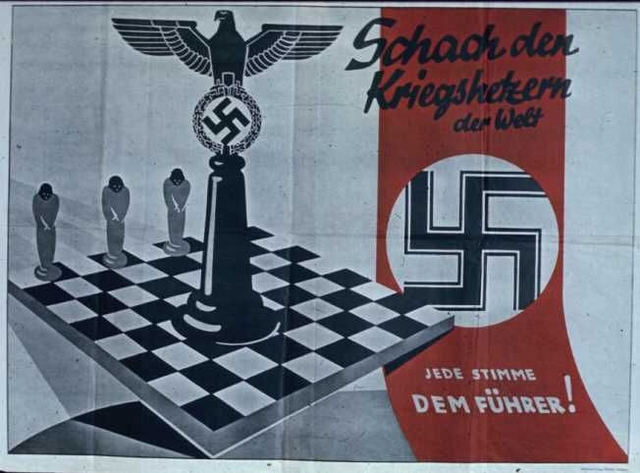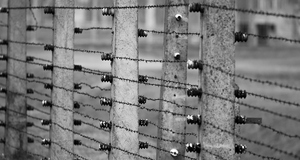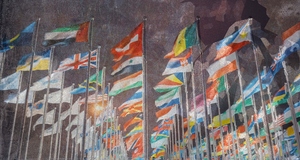Fascism: A Political Ideology of the Past
By
2010, Vol. 2 No. 11 | pg. 1/1
IN THIS ARTICLE
KEYWORDS
AbstractFascism cannot adapt to, and exist under, certain prominent, contemporary conditions. Specifically, it cannot adapt to the strong democracies in which extreme right parties operate, nor to the ideology of radical Islamic groups. This paper begins by defining fascism. It then notes a few conditions that enable fascism to exist, and applies these conditions to post-World War I Italy and Germany to demonstrate how fascism rose in those countries. The paper then discusses extreme right parties in Europe and whether they are fascist. In doing so, it compares the parties’ ideologies to fascist ideology. It also applies the conditions in which fascism arose in Italy and Germany to the conditions within which the extreme right parties currently operate. The paper determines that these parties are not fascist. The paper then analyzes radical Islamic groups. In the absence of comparable conditions, the paper focuses on the radical Islamic groups’ ideology to determine whether they are fascist. Like the extreme right parties, the radical Islamic groups are not fascist. The paper concludes with some reflections on the possibility of future fascist movements. What is Fascism?Fascism believes in the superiority of the nation. “The nation” refers to a collection of people bound together by race, ethnicity, or culture. Germans and Italians are examples of nations. The way to achieve national superiority is through the state.1 The ultimate goal of the major fascist regimes that have existed, like the regimes of the Italian Fascist Party and the German Nazi Party, was to pursue national greatness. Mussolini intended to “guide the material and moral progress of the [Italian] community.”2 Hitler planned to return the German nation to its position as “the culture-founder of this earth.”3 Hitler and Mussolini wanted to place the nation above all other bases of loyalty, including class relations and religion.4 
Poster from 1936 referendum. Reads: “Check the war-mongers of the world. Every vote for the Führer!” The type of state needed to fulfill this goal is anti-democratic and totalitarian. Such a state is anti-democratic because it eliminates democratic institutions, like the electoral, parliamentary, and multiparty systems, that frustrate this goal of national greatness. Democratic elections are problematic because the masses elect candidates who appeal to the masses’ self-interest. This does not guarantee that the candidates have the nation’s interest in mind. This weakens the state and, ultimately, the nation.5 Parliament is problematic because the parties in it spend more time arguing than implementing policies. Indeed, Hitler referred to Parliament as a “twaddling shop” for this reason. 6 Other parties are problematic because, by competing with fascist parties to gain power, they prevent fascist parties from pursuing the ultranationalist goal. The state is totalitarian because it controls aspects of citizens’ lives, such as their leisure time, education, and political activity, to ensure that the citizens support the regime’s goal.7 Fascism, as defined in this paper, is the ideology of nationalism upheld by an anti-democratic and totalitarian state. Some Enabling Conditions for FascismFascism generally flourishes in countries with strong nationalism and weak democracies. Strong nationalism attracts people to fascism’s ultranationalist goals.8 “Weak democracy” has two meanings, both of which enable fascism to flourish. A democracy is weak in that it is incompetent and unresponsive. Consequently, citizens become disenchanted with it and are willing to abandon it for another regime type. A weak democracy also refers to a democratic tradition that is fairly new and not strongly entrenched.9 This also enables fascism to flourish because it is easier to replace this type of democracy with another regime. Enabling Conditions Applied to Italy and GermanyAll these conditions apply to the political and social situations in post- World War One Germany and Italy. Nationalism, in the form of national resentment, was potent. Italians and Germans believed that their national pride had been humiliated. Italians felt this way because they believed their country had not been awarded the amount of territory it should have been awarded after World War One ended.10 Germans felt this way because their government had accepted the Treaty of Versailles. The Treaty required Germany to accept the blame for starting World War One and imposed harsh reparations, as well as substantial territorial concessions, on Germany.11 The Fascist and Nazi parties were appealing because they promised to restore the national greatness that citizens felt was lacking. Italian and German democracies, and democratic traditions, were weak. Both countries had unified and become democracies relatively late. Italy unified between 1860 and 1870, and Germany unified around 1870.12 Their parliaments were rather unresponsive to citizens’ needs. For example, neither the German nor Italian parliament was able to stem the post-World War One economic crises, and rises in unemployment, in their countries.13 As a consequence of all these factors, Italian and German citizens were willing to support fascism. Extreme Right Parties and FascismExtreme right parties in Europe share ideological aspects with fascism. For this reason, they are sometimes considered neofascist parties: parties that are the contemporary incarnation of fascism.14 For instance, the extreme right parties desire to advance the nation by getting rid of all immigrants.15 The parties believe that immigration ruins the nation. The parties contend that immigrants cause citizens of the host country to become unemployed. As Jean-Marie Le Pen, leader of the FN (Front National) in France, once said, “1 million unemployed- this means 1 million foreigners too many.”16 Immigrants also allegedly ruin national culture by preserving their own customs instead of adopting those of their host country.17 Ridding the country of immigrants will stop these problems and ultimately benefit the nation. Immigration engenders a condition that enables fascism to arise: national resentment. The extreme right parties’ unfavorable views regarding immigrants reflect the citizens’. In addition, many citizens believe that immigrants appropriate welfare benefits that should go to citizens instead. Immigrants are also commonly believed to commit crimes against citizens. 18 Indeed, the national resentment directed towards immigrants is a combination of indignation and fear. It should be noted, however, that the condition of national resentment by itself is not sufficient to engender fascism. The combination of national resentment and weak democracy offer a better opportunity for fascism to rise. The democratic conditions within which these parties operate ultimately do not allow fascism to flourish. Democracy is more deeply entrenched during the contemporary era than it was in the post-World War One era. While Nazis and Fascists managed to overthrow the democratic regimes in their countries, there are now supranational and national barriers that discourage this from happening. Many extreme right parties operate in countries that are part of the European Union: the FN of France, the AN (Alleanza Nationale) of Italy, the BNP (British National Party) of the United Kingdom, and the FPO (Austrian Freedom Party) of Austria (among others).19 As members of the European Union, these countries are required to have, and maintain, a democratic regime.20 Moreover, the general mindset within many of these countries is democratically predisposed. Indeed, the extreme right has “sought to render [itself] acceptable in an age assumed to be democratic.”21 The extreme right parties have had to conform to citizens’ expectations of their governments in order to gain electoral support. Democracy prevents fascism. In order to implement fascism, a state needs to be anti-democratic. However, given supranational and national conditions, the state in European countries is democratic. If fascism were to adapt to these democratic conditions, it would cease to exist. Indeed, it would become a new ideology: national-populism. National-populism results from “a conscious effort to update fascism and render it viable in changed [democratic] conditions.”22 The AN exemplifies this transformation. Before it became the AN, this party was called the MSI (Movimento Sociale Italiano). The MSI was considered neofascist because it was a descendant of an earlier, quasi-fascist party.23 However, once the MSI “accepted democracy as a system of values,” it morphed into the AN, a national-populist party.24 The extreme right parties, which are often called neofascist, are actually national-populist. Moreover, democracy changes the nature of the goal that national-populist parties and fascism share in common. According to fascism, the way to advance the nation is to have a leader who embodies the will of the people. This person, not the people themselves, knows best what is in the nation’s interest.25 National-populist parties do not take this approach. Instead, they advocate direct democracy initiatives, such as the referendum, because such initiatives enable citizens’ preferences to be heard.26 However, from a fascist perspective, these preferences only take into account the citizens’ individual interests, not the collective interests of the nation. Individual interests are different from the national interest. 27 So national-populists are not advancing the nation when they advocate direct democracy. Ultimately, then, they are not fascist in practice or in theory. Radical Islam and FascismThe conditions within which the extreme right/national-populist parties operate are not identical to those in which the Fascist and Nazi parties operated. However, the conditions are at least comparable. This is not the case for radical Islamic movements and the Fascist and Nazi parties. Religion was not a significantly important issue during the time the Fascist and Nazi parties of Italy and Germany were active. Although the Nazi Party’s extermination of Jewish people appears to be religious persecution, being Jewish was considered a racial, rather than a religious, trait. To determine whether radical Islam is a manifestation of fascism, one must analyze its ideology. Radical Islam is similar to fascism in terms of the type of state it envisions. The radical Islamic state is anti-democratic.28 The state imposes sharia, or Islamic law, rather than democratic laws. Theoretically, the two sets of laws can overlap, in that sharia principles are also democratic principles. For example, “the Qur’an insists on mutual consultation in deciding communal affairs which includes choosing leaders to represent and govern on the community’s behalf.” 29 This is consistent with the notion of democratic elections. However, in practice these shared principles are usually violated. In an extreme example, the Taliban of Afghanistan claimed to adhere to sharia. Yet the Taliban regime refused to allow democratic elections to take place while it was in power and still tries to stop them, even after being deposed.30 The radical Islamic state is also totalitarian. The state is holistic and has control over every facet of life. 31 Hezbollah, for example, wants to establish an Islamic regime in Lebanon. It believes that all aspects of people’s lives, such as the social, cultural, economic, and political aspects, should serve this end.32 Hezbollah also believes that the state should be used to ensure that these aspects of life fulfill Hezbollah’s vision.33 Yet the goal of radical Islam differs from the goal of fascism. Whereas fascism strives to advance the nation, radical Islam wants to spread Islamic belief and establish Islamic societies.34 Moreover, while fascism endeavors to place the nation above all else, radical Islam endeavors to place Islam above all else. For example, Hamas’ slogan is: “Allah is [Hamas’] target, the Prophet is its model, the Koran is its constitution, Jihad is its path, and death for the sake of Allah is the loftiest of its wishes.”35 Islam is so important that it even takes priority over life. In contrast, Hitler states that a German “willingly subordinates his own ego to the life of the [national] community and, if the hour demands, even sacrifices it.”36 The sense of importance in Hitler’s and Hamas’ statements is the same, but the object of importance is different. Another way to understand fascism and radical Islam’s beliefs on what takes ultimate precedence is to look at what they think is the most important quality in an individual or group. Since the nation takes ultimate precedence for fascists, national origin is the defining quality of an individual. Fascism led people to believe that their job position or social rank was not fundamentally important. Whether or not they were German or Italian, however, was crucial.37 The same pattern applies to radical Islamic groups. Since Islam is paramount, Muslim identity is the defining quality. Hamas, for example, claims to welcome “every Muslim who embraces its faith, ideology, [and] follows its program.”38 The Muslim Brotherhood works “to achieve unification among the Islamic countries and states.”39 The fact that the nationality of Muslims who can join Hamas, or of the countries the Muslim Brotherhood wants to unite, is not specified suggests that it is not as important as the religion. Given the goal of the radical Islamic movements, as well as the relative unimportance of national origin, radical Islamic movements are not fascist. However, there is a subset of fascism called clerical fascism. Clerical fascist movements are as religious as they are nationalistic. The Hungarian Arrow Cross, which was active during the 1930’s, can be considered a clerical fascist group, in that it believed religion and nationalism were equally important. Indeed, the Arrow Cross believed that religion was a pillar of the nation. Ferencz Szalasi, the leader of the Arrow Cross, explained that “when the Army sees that in the nation the three pillars of Religion, Patriotism, and Discipline have been shaken, then it is the duty of the Army to force the nation back on to these pillars.”40 The Iron Guard, a Romanian group that operated around the 1930’s, is also thought to be clerical fascist. The Iron Guard “saw the Romanian Orthodox religion as coterminous with Romanian nationality….”41 Although these groups gave equal priority to both nationalism and religion, they are still generally considered fascist. Are radical Islamic movements examples of clerical fascism? A balance between nation and religion in radical Islamic movements is difficult to discern. Religion is paramount for the radical Islamic movements. For example, although the Muslim Brotherhood operates in Egypt, its mission statement hardly ever refers to Egyptians. When it does implicate Egyptians, it refers to them as Muslims, not as Egyptians. The mission statement says, “Indeed, the present atmosphere of suppression, instability, and anxiety has forced many of the young men of [Egypt] to commit acts of terrorism….we request all Muslims to abandon such actions and return to the right way.”42 Moreover, some radical Islamic movements operate in different states simultaneously. Al Qaeda, for example, is active in North America, South America, Europe, Africa, and Asia.43 It is difficult for such a widespread movement to claim that its religion, like the Romanian Orthodox religion, is uniquely coterminous with a particular nationality. Ultimately, then, these radical Islamic movements are neither fascist nor clerical fascist. ConclusionNeither extreme right parties, nor radical Islamic groups, are fascist. Indeed, in regards to the extreme right, or nation-populist, parties, democracy appears to be an effective antidote to fascism. However, just because democracy has proven to be successful against fascism in this particular situation, it does not guarantee that democracy will always be successful. One cannot predict with certainty what democratic conditions will be like in the future or what types of political parties will exist. Similarly, while the ideology of radical Islamic groups is not currently compatible with fascism, or even clerical fascism, there is always a possibility that the radical Islamic paradigm will evolve so that it does become fascist in some way. Ultimately, just because fascism does not presently exist in these scenarios does not mean it never will. Endnotes
Suggested Reading from Inquiries Journal
Inquiries Journal provides undergraduate and graduate students around the world a platform for the wide dissemination of academic work over a range of core disciplines. Representing the work of students from hundreds of institutions around the globe, Inquiries Journal's large database of academic articles is completely free. Learn more | Blog | Submit Latest in History |


















